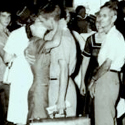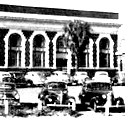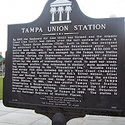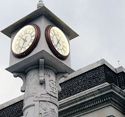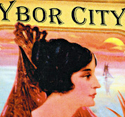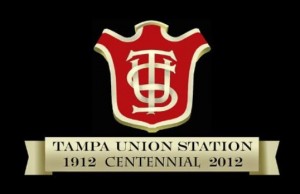Tampa Union Station, located at 601 North Nebraska Avenue, lies at the eastern edge of Downtown Tampa and stands as the gateway to Ybor City.
Designed by architect J.F. Leitner of Wilmington, North Carolina (who later became a Tampa resident himself), this Italian Renaissance Revival style building was opened on May 15, 1912, by the Tampa Union Station Company. Its original purpose was to combine passenger operations for the Atlantic Coast Line, the Seaboard Air Line, and the Tampa Northern Railroad at a single site.
Tampa Union Station served railroad passengers through the Great Depression, both World Wars, and into the Amtrak era. Along the way—in 1974—it was added to the National Register of Historic Places.
Throughout the 1950s, Federal investments in highways and air travel began to undermine Tampa Union Station’s future. Passenger train ridership began to decline heavily during the ‘50s, a trend which continued throughout the next two decades. As passenger train ridership fell over the years, Tampa Union Station began to suffer from deferred maintenance.
By the 1980s, the roof of the old depot leaked with every rain, plaster fell from the ceiling on a regular basis, and paint peeled throughout the proud terminal—neglect in part brought about by the shifting loyalties of the traveling public. DC-9s and interstate highways were now the modes of transport favored by the majority of those coming and going to and from Tampa. The station closed to the public in 1984.
Built at a time when racial segregation in railroad stations was mandated by state law, the station’s waiting room was originally divided by a wall which separated waiting rooms and restrooms for white and African-American passengers. Segregation of train depots, bus stations, airports and other transportation facilities in the South was ended beginning in the mid-1950s. Throughout the segregated era and beyond, railroads depended upon significant numbers of African-American employees as track maintainers, locomotive firemen, Pullman porters and in other key positions, and counted on revenues from Black customers for their trains.
Following Union Station’s 1984 closure, Amtrak passengers arriving and departing from Tampa had to use a temporary “make do” ticket office and waiting room in a prefabricated building located adjacent to the station platforms.
In 1988, local historic preservationists and passenger rail advocates, Tampa Union Station began its long path back to restoration. That year, nonprofit Tampa Union Station Preservation & Redevelopment Inc. (TUSP&R) was founded with the goal of raising grant money for restoring Union Station. Also that same year, Tampa Union Station helped to foster a citywide conversation about preserving the past by becoming one of the first buildings to be designated a Tampa Landmark under the City of Tampa’s new historic preservation ordinance.
In 1991, TUSP&R acquired Tampa Union Station via a mortgage held by CSX, the freight railroad company which was the corporate descendant of its original railroad owners. What’s more, TUSP&R was successful in its efforts to raise funds for the restoration of the station.
TUSP&R—led largely by volunteers—raised over 4 million USD for the building’s restoration through grants and loans. Funding sources included the Florida Department of Transportation (ISTEA funds), the City of Tampa (grant funds) and the National Trust for Historic Preservation (no interest loan).
Restoration of Tampa Union Station was a multi-year effort, with Rowe Architects serving as historic preservation architect for the project. Restoration was completed in May 1998. At the completion of the restoration, the station reopened to Amtrak passengers and the public. CSX donated the station to the City of Tampa that same year.
In 2008, the nonprofit Friends of Tampa Union Station was founded. This all-volunteer group that same year established a permanent endowment fund for the care and upkeep of Tampa Union Station at the Community Foundation Tampa Bay. Income from the endowment assists with maintenance and ongoing restoration at Union Station.
In 2009, the City of Tampa’s Official Poet Laureate, James E. Tokley, Sr., authored a poem about the history of Union Station entitled “The Epic of Tampa Union Station.” This poem is available on the City of Tampa’s website.
In 2012, Tampa Union Station’s Centennial year, the station was added to the National Register of Historic Railroad Landmarks by the National Railway Historical Society.
For further reading about the fascinating history of railroads in the Tampa Bay area and to view photographs and maps, see the publication All Aboard: Tampa Bay’s Railroad History, which was produced by the Tampa Bay Times Newspaper In Education program and Friends of Tampa Union Station with a grant from Hillsborough County.
More information is also available at the website Tampa Bay Trains.










